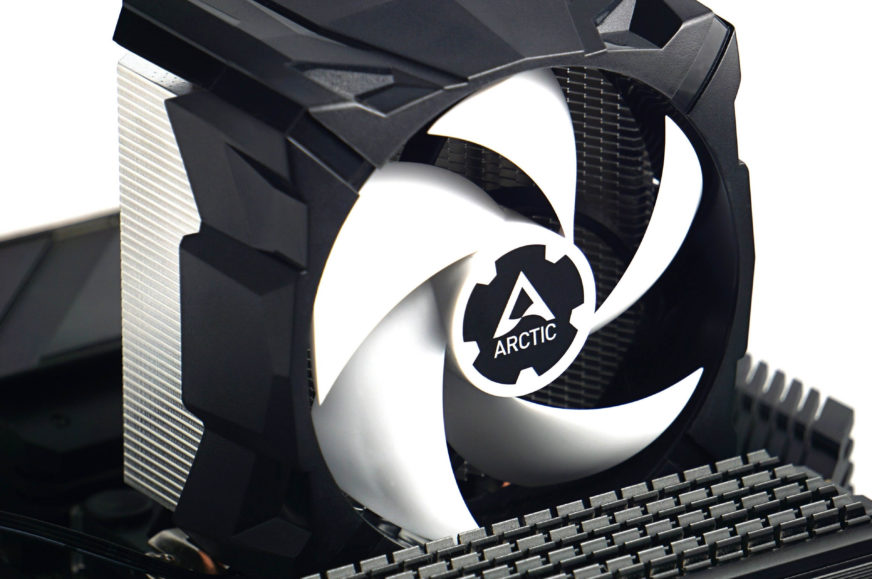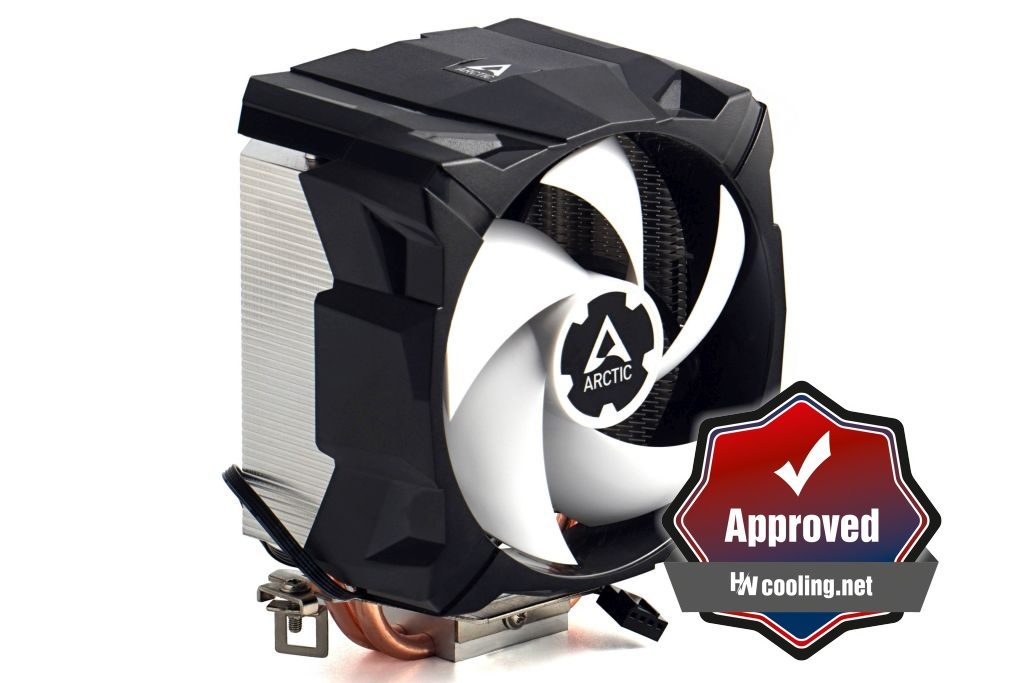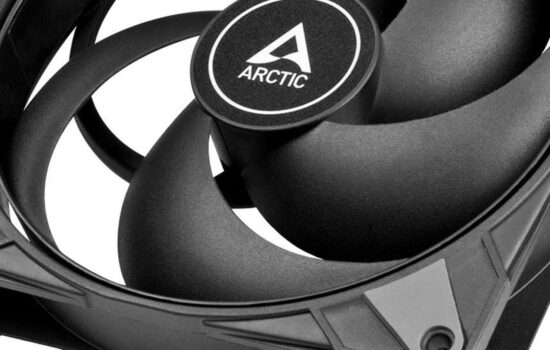Conclusion
How many generations of processors could the Freezer 7 cool? The most. No other brand of coolers has been around for so long. That’s worthy of respect, but the fact remains that the progression in efficiency is rapid from revision to revision. Some improvements do come, but at a slower rate than competing solutions that are way more cost-effective. Thus, Freezer 7 often reaches the shelves of brick-and-mortar stores and PC builds only by inertia.
Conclusion
To be clear right off the bat – the Arctic Freezer 7 X is not a bad cooler.
But it has a bit of bad luck in that it operates in the era of the SilentiumPC Spartan 5, against which it can practically only offer better compatibility with cases. However, the number of cases where the 146 mm tall Spartan 5 won’t fit and the 133 mm tall Freezer 7 X will be just right is minimal.
The difference in cooling effectiveness between the Freezer 7 X and the Spartan 5 is quite large. What the Spartan 5 can handle, the Freezer can too, but at a higher noise and higher temperature (not only CPU cores but also VRMs around the socket). Titulok testu k Spartan 5 znel “This much power is often all you need”, but it doesn’t apply to the Arctic cooler. In fact, the Poles have optimized the design of Spartan 5 so that it does not contain a bottleneck for more economical processors with a power draw of around one hundred watts.
The “only” two Freezer 7 X heatpipes are fine (that’s a shared feature with the Spartan 5 as well), but the Arctic cooler lacks the larger fin area. Therefore, the temperature difference when cooling a 65 W Alder Lake processor is 5-11 °C and without power limits (~93 W), the upper range is closer to 20 °C.And that’s a big difference. In addition, towards lower speeds (and lower noise), the cooling performance of the Freezer 7 X decreases faster than that of the Spartan 5. The Arctic cooler passed the quietest mode (31 dBA) only with the CPU power draw set to TDP. Another 30 W was just too much load for the Freezer 7 X and the cooler failed here.
However, the Freezer 7 X holds its own in cooling the surroundings of the socket and always loses only by a bit to the Spartan 5. The difference is significantly less than in CPU cooling, but there’s still that key thing that doesn’t play into Arctic’s hands at all – the Freezer 7 X is always weaker than the Spartan 5, and at the same time at a higher price.
Until recently, it would have been true that Arctic has (compared to SilentiumPC) a more acoustically pleasing fan, but even that is quite questionable.The Fluctus fan on the Spartan 5 has a significantly more refined sound, and while the Arctic fan isn’t much worse in this regard, it does have a louder rattle (or rather a gentle spinning sound, but more intense than the Fluctus). The DIMM slots are not crossed by the Arctic cooler, but that’s nothing exceptional. The installation mechanism of the Freezer 7 X in this class is traditionally via push-pins. A compromise solution, but understandable in this price range. A more robust system with a backplate is significantly more expensive and would be reflected in the overall price of the cooler.
We ponder, we ponder, but we don’t come up with a reasonable defense for why to purposely buy a Freezer 7 X today. If you need a cooler urgently and nothing better is available in a hurry, fine, but if you’re not in a hurry you already know that the Spartan 5 has a class better price/cooling performance ratio.
English translation and edit by Jozef Dudáš
| Arctic Freezer 7 X rev. 3 |
| + Low price |
| + Decent price/cooling performance ratio |
| + Height only 132.5 mm – superior compatibility with slimmer/lower PC cases |
| + Processors with a power draw of around 65 W can be handled even at very low noise levels, at the limit of audibility |
| + Easy and quick installation |
| + Remarkable heatsink and fan design details for a low-end design |
| - Significantly lower efficiency than the cheaper SilentiumPC Spartan 5 |
| - More subtle installation via push-pins |
| - Non-standardized fan frame and more complicated replacement (with a homemade solution) in case of failure |
| - Hard link between the fan and the heatsink. Given the perceptible vibrations on the frame, the soft pads make sense |
| - Thermal paste only in a disposable bag |
| Orientačná koncová cena: 19 eur/469 Kč |
- Contents
- The Arctic Freezer 7 X rev. 3 cooler in detail
- Results: Maximum performance
- Results: Higher performance (45 dBA)
- Results: Medium performance (42 dBA)
- Results: Lower noise level (39 dBA)
- Results: Low noise level (36 dBA)
- Results: Very low noise level (33 dBA)
- Results: Audibility threshold (31 dBA)
- Conclusion












